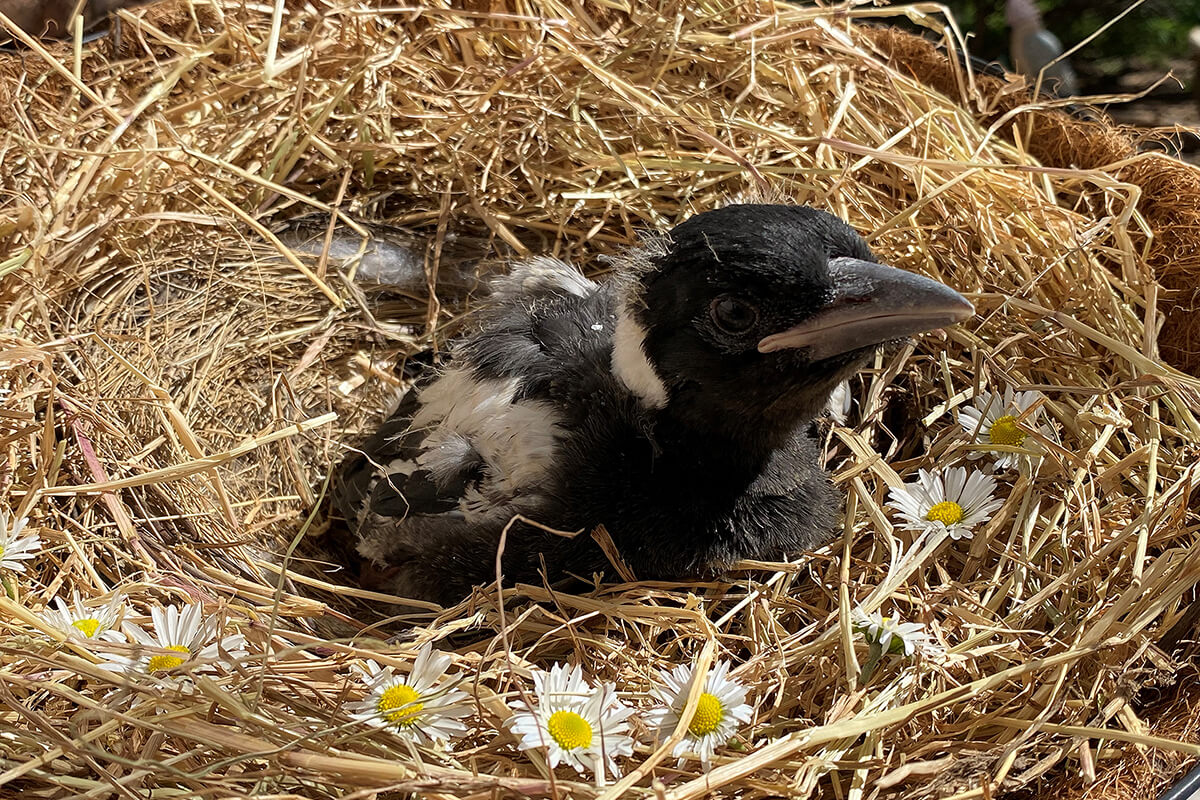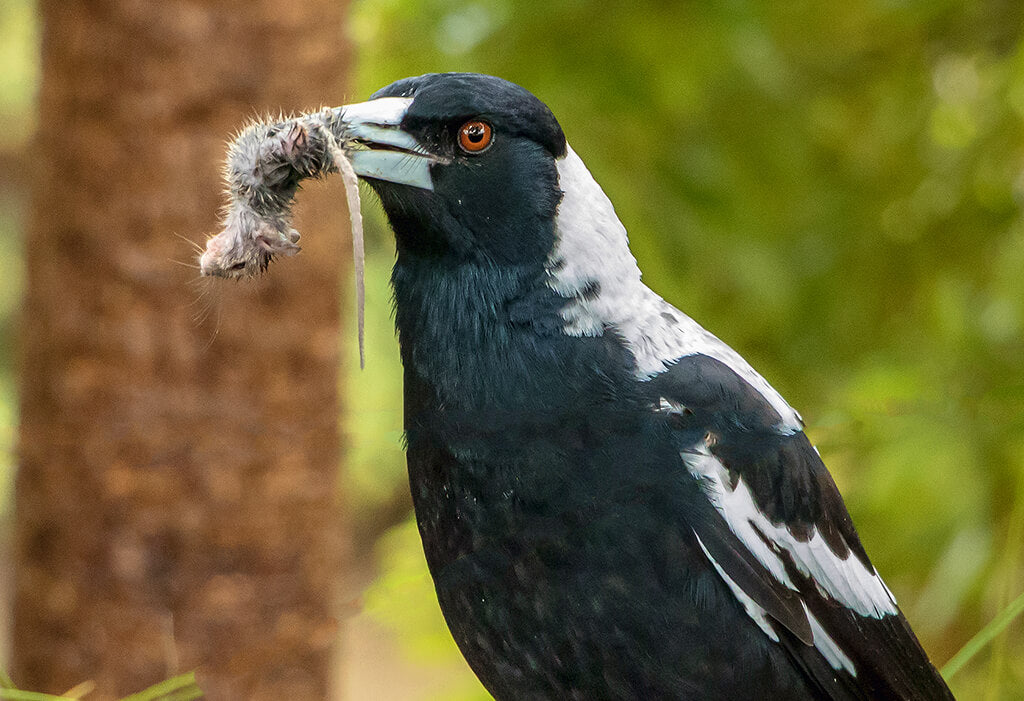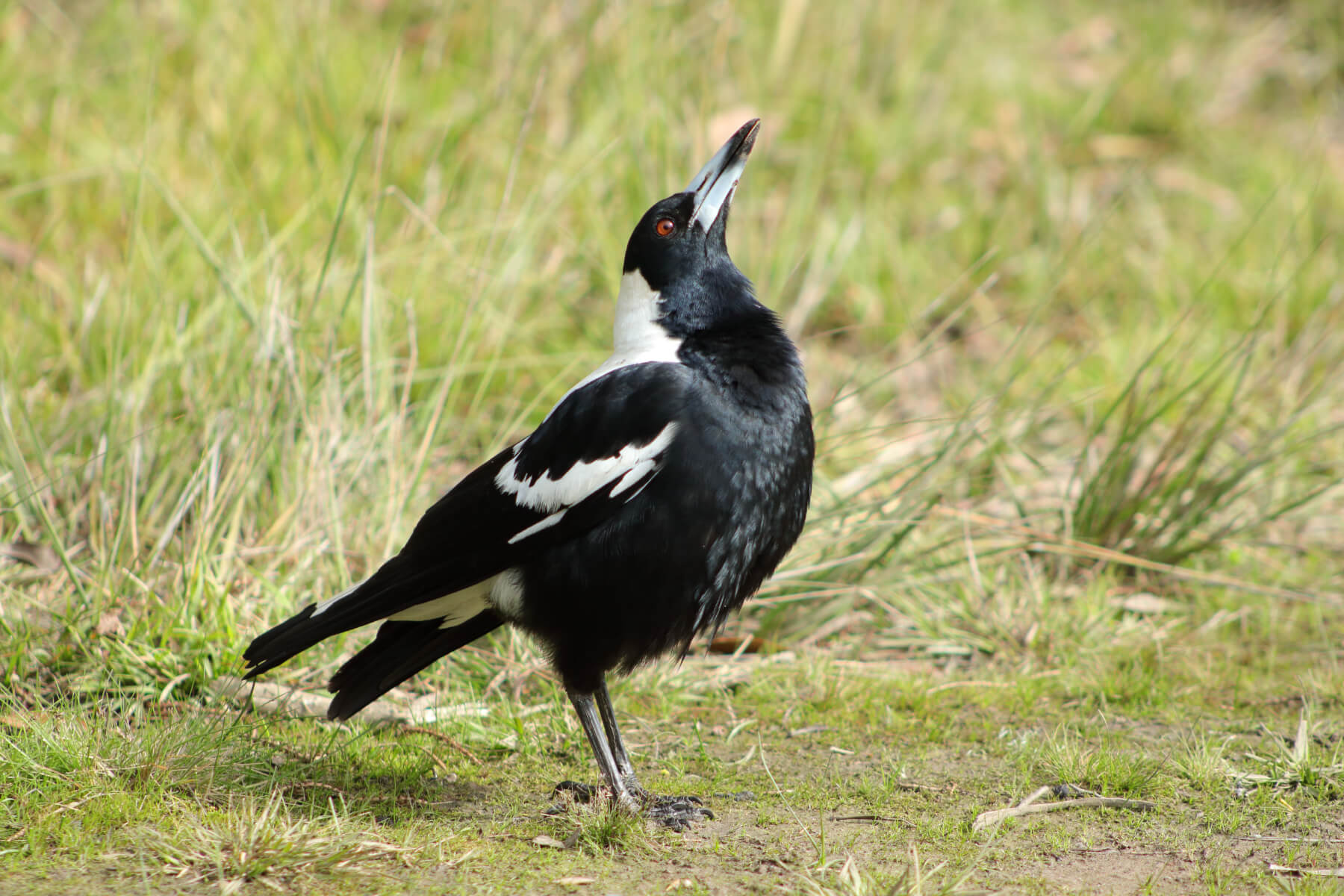Understanding Magpie Pox: Common Symptoms and Treatment Options
Posted by The Magpie Whisperer on
🖨️ You are welcome to download and print this article as a PDF file
It is important to note that different bird species have different pox viruses. While magpie pox affects magpies and closely related species, other pox viruses may affect different bird species.
In addition to the physical symptoms, magpie pox can also have significant impacts on the social dynamics of bird populations. Infected birds may become weakened and vulnerable, making them more likely to be excluded from social groups.
Importance of Proper Nutrition and Monitoring
Although magpie pox can be concerning, birds with mild cases can often recover on their own within a few weeks in the wild with proper nutrition to boost their immunity and aid in their recovery, along with being closely monitored to ensure the condition does not become more serious.
Experts generally advise leaving the bird in its natural environment in such cases to avoid adding to its stress by taking it out of the wild and caging it for treatment. Taking an infected magpie out of its territory can also result in the loss of its place in the complex social hierarchy upon its return to the wild, leading to social exclusion and difficulties reintegrating into its natural habitat, ultimately putting its survival at risk. Therefore, it is crucial to weigh the potential risks and benefits before intervening in such cases.
It is important to be aware that magpie pox can cause discomfort and pain for affected birds. The growths can be itchy and painful, and in some cases, they may even lead to a secondary bacterial infection. Unfortunately, in severe cases, the disease can be fatal for the bird. That is why it is important to take necessary measures to ensure the health and welfare of magpies and other wildlife.
Symptoms of Magpie Pox: Recognising the Signs of the Disease in Birds
 The symptoms of magpie pox are small, wart-like growths that appear on the skin, around the eyes, and beak of affected magpies. The virus can cause scabs and lesions on the birds' feathers and skin, which can be distressing to see. The growths can make it difficult for magpies to see, eat, and fly, and they can also make the birds more vulnerable to predators.
The symptoms of magpie pox are small, wart-like growths that appear on the skin, around the eyes, and beak of affected magpies. The virus can cause scabs and lesions on the birds' feathers and skin, which can be distressing to see. The growths can make it difficult for magpies to see, eat, and fly, and they can also make the birds more vulnerable to predators.
In addition to the physical growths and lesions, magpies with magpie pox may also exhibit other symptoms. They may appear lethargic, lose their appetite, and experience weight loss. Infected birds may also have difficulty breathing or develop respiratory symptoms, such as sneezing or coughing.
Magpie Pox Treatment: Options and Approaches
Iodine Foot Bath
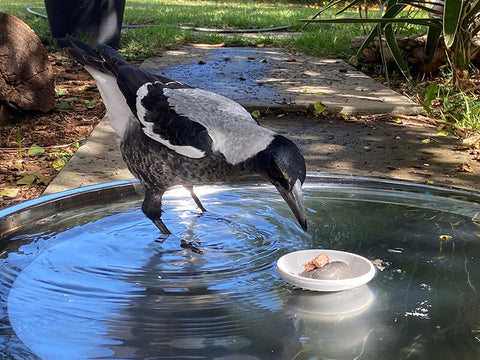 A daily iodine foot bath is a popular treatment option that can help in providing relief to the affected bird. To create a foot bath, you can start by finding a large tray that is big enough for your magpie to comfortably walk through. Next, you can prepare a 1% solution of iodine in the tray.
A daily iodine foot bath is a popular treatment option that can help in providing relief to the affected bird. To create a foot bath, you can start by finding a large tray that is big enough for your magpie to comfortably walk through. Next, you can prepare a 1% solution of iodine in the tray.
To encourage your magpie to walk through the foot bath, consider placing a small bowl in the middle of the tray with a treat. The presence of the treat will entice the bird to step into the iodine solution as it walks around the tray, which will allow the iodine to come into contact with the affected areas of the bird's feet.
It's important to note that the magpie may be cautious of the tray and take some time to build up its confidence to walk through it. Therefore, it's recommended to be patient and allow the bird to approach the tray on its own terms. By providing a treat and creating a comfortable environment, the magpie will eventually feel more comfortable and walk through the foot bath.
|
💡 When giving a magpie an iodine foot bath, it's important to use a 1% solution of iodine. To ensure the safety of the bird and other wildlife, it's best to keep a watchful eye and only allow the magpie access to the treatment bath while you are actively observing. This will help prevent the bird from accidentally ingesting the solution by drinking or dropping food into it. To make a 1% solution of iodine in, let's say, 2 litres of water, you only need 20 ml of iodine. Just remember to mix it thoroughly before using it on your feathered friend. |
Spray Bottle
To treat magpie pox, spraying the affected area with a 1% solution of iodine using a spray bottle can be a gentle approach, especially if the magpie is friendly and trusting. However, it's crucial to exercise caution when using a spray bottle to avoid spraying the magpie's eyes, which can cause discomfort and further irritation. To prevent this, you can aim the spray bottle away from the magpie's head and towards the affected area while keeping a safe distance. By taking these precautions, you can ensure a safer and more comfortable treatment experience for the magpie.
Supplements
Vetafarm Synbiotic is a highly beneficial product to have when caring for birds. This supplement is specifically designed to support the immune system of birds, which is important for their overall health and wellbeing. By providing birds with Vetafarm Synbiotic, caretakers can help boost their immune function, making them less susceptible to illnesses and infections. This is particularly important for birds that are recovering from illness or injury, as their immune systems may be weakened.
Complications Associated with Magpie Pox Infection
Magpie pox can cause growths that can lead to a secondary bacterial infection. The infection may require antibiotics prescribed by a veterinarian, and the affected bird may need to be cared for by a licensed wildlife carer. If the growths become too large, they can cause permanent damage to the bird's eyes and beak. When left untreated, the bird's condition can worsen and cause discomfort, pain, and eventually, death.
Licensed wildlife carers can provide the necessary care for the welfare, survival, and recovery of magpies affected by pox. They can administer antibiotics, pain medication, and nutritious food, as well as monitor the bird's progress and provide a safe and quiet space for it to recover. With proper care, many magpies can recover from pox and be released back into the wild, where they can live freely once again.
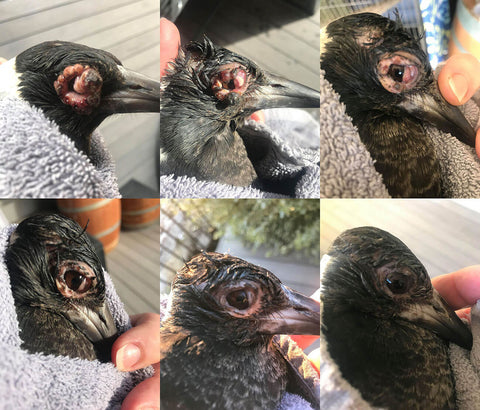 Amazing before and after transformation and recovery photos of a case of severe magpie pox. Thanks to the amazing care and dedication of licensed wildlife carer Alissa Willacott and Wildcare, this bird was able to make a full recovery in just 46 days, with plenty of pain relief provided along the way.
Amazing before and after transformation and recovery photos of a case of severe magpie pox. Thanks to the amazing care and dedication of licensed wildlife carer Alissa Willacott and Wildcare, this bird was able to make a full recovery in just 46 days, with plenty of pain relief provided along the way.
After a daily eye stream flush and application of Tricin ointment, as well as Metacam for pain relief, multivitamins in water, and a nutritious diet, the magpie began to recover from its injuries. Manuka honey was applied around the outside of the eye a few weeks later, which helped in the healing process. We are pleased to report that the magpie has been successfully released back into the wild, where it can live freely once again.
Protecting Wildlife from Diseases like Magpie Pox
Magpie pox serves as a reminder of the importance of creating and maintaining a healthy environment for our beloved wildlife. One effective way to achieve this is by preventing the buildup of stagnant water, which can attract disease-carrying insects such as mosquitoes. Simple actions, such as frequently changing the water and regularly cleaning bird baths and feeding stations, can significantly help protect magpies and other wildlife from diseases like magpie pox. By taking these measures, we can ensure the continued health and thriving of our wildlife for generations to come.

